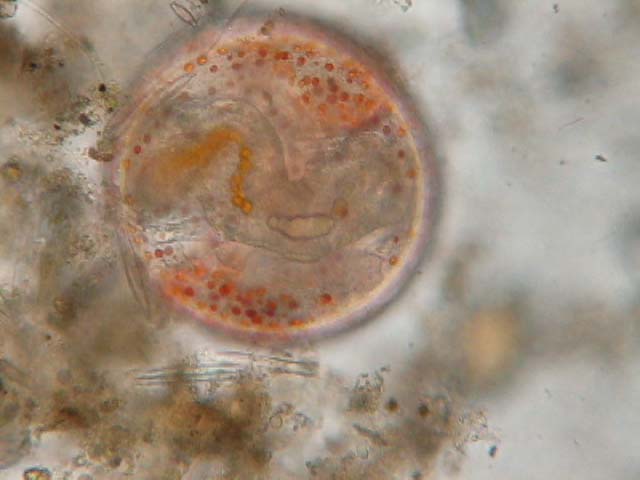
Above : Video still extract of an Aeolosoma inside an egg or possibly a cyst. 400x magnification
Question for Worm Experts : Is this an Aeolosoma Egg or a Cyst?
Two videos:
Moving about inside, showing organs, 400x, brightfield:
AeoloEggCyst400xbf_6865.DIVX 12 seconds 2 MB
1000x magnification showing bristles:
Aeolosoma1000x_6882.DIVX 7 seconds 1.2 Mb
If by chance you know what this is then please write and I will complete this information. Thanks!
::::::::::::::::::::::::::::::::::::::::::::::::::::::::::::::
Thomas Ashcraft
:::::::::::::::::::::::::::::::::::::::::::::::::::::::::::::::
Information on Aelosoma Cysts
CYST-FORMATION IN AEOLOSOMA HEMPRICHI (EHR)
1 Institute of Biologie of Brussells and
University of Montreal
(1). The fresh-water oligochaete, Aeolosoma hemprichi, hibernates in the form of a cyst.
(2). When the worms are placed in a rich nutritive medium at 6° C., their movements are slowed down, and their growth stops. At this period, chains are formed of two zooids, at the most. Meanwhile, the worm accumulates food reserves, becomes opaque and secretes a mucus which will harden and form a transparent cyst.
(3). The worm stays motionless inside the cyst during the entire cold period. When the temperature increases, it becomes active again, uses up its food reserve and becomes transparent. After about fifteen days, it emerges and resumes its growth according to certain definite laws of scissiparity particular to this species.
http://www.biolbull.org/cgi/content/abstract/99/2/173:
:
:
:
Meiji Microscope and optics
Canon S3 IS camera
To Heliotown